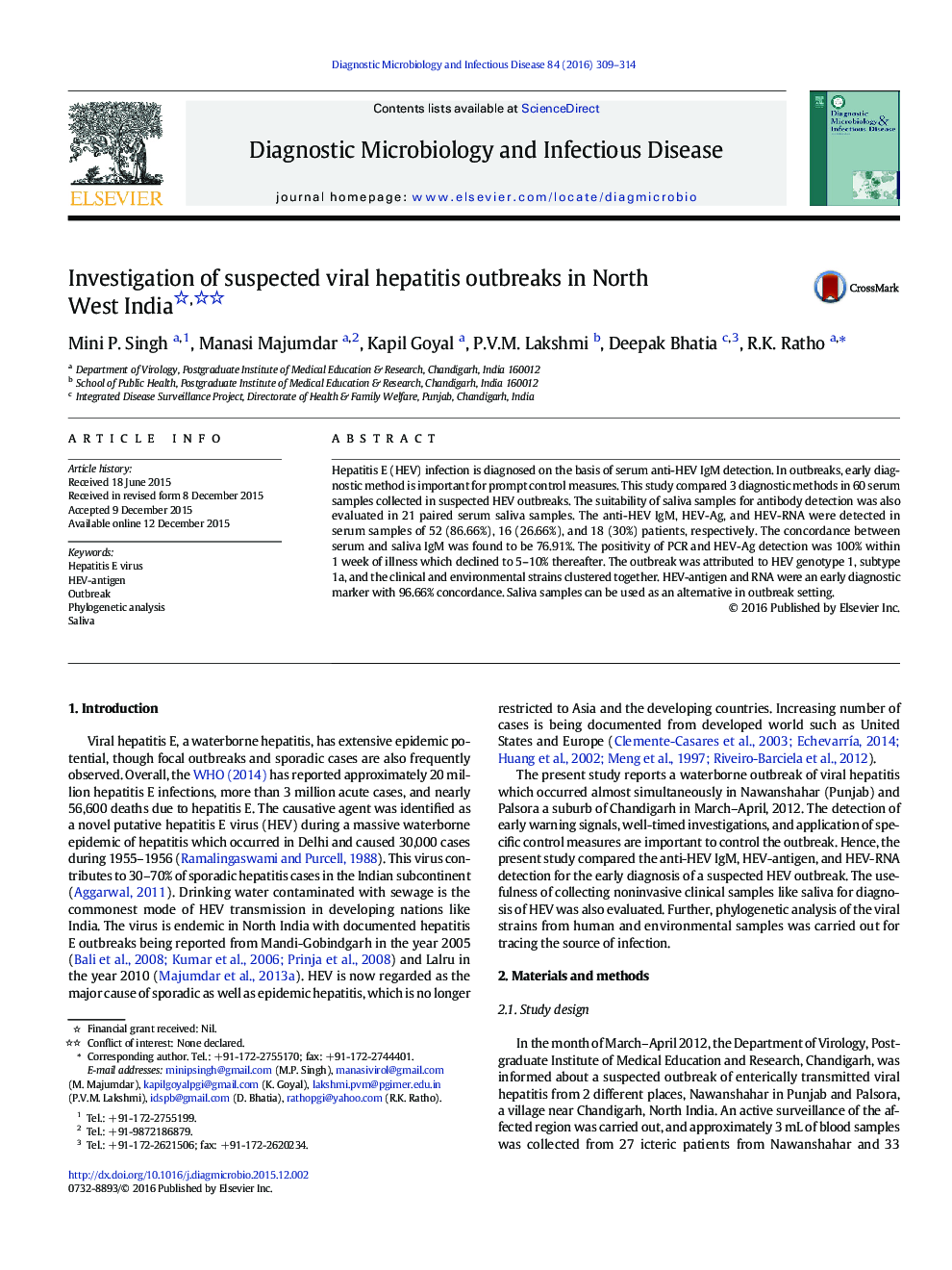| Article ID | Journal | Published Year | Pages | File Type |
|---|---|---|---|---|
| 3346814 | Diagnostic Microbiology and Infectious Disease | 2016 | 6 Pages |
•High concordance between HEV-antigen and HEV-RNA detection in serum samples.•HEV-antigen and HEV-RNA can be an early diagnostic marker of HEV infection.•Saliva can be an alternate diagnostic sample for HEV infection.•Sewage contamination of drinking water suggested in both the outbreaks.•Both clinical and environmental strains belong to HEV genotype 1, subtype 1a.
Hepatitis E (HEV) infection is diagnosed on the basis of serum anti-HEV IgM detection. In outbreaks, early diagnostic method is important for prompt control measures. This study compared 3 diagnostic methods in 60 serum samples collected in suspected HEV outbreaks. The suitability of saliva samples for antibody detection was also evaluated in 21 paired serum saliva samples. The anti-HEV IgM, HEV-Ag, and HEV-RNA were detected in serum samples of 52 (86.66%), 16 (26.66%), and 18 (30%) patients, respectively. The concordance between serum and saliva IgM was found to be 76.91%. The positivity of PCR and HEV-Ag detection was 100% within 1 week of illness which declined to 5–10% thereafter. The outbreak was attributed to HEV genotype 1, subtype 1a, and the clinical and environmental strains clustered together. HEV-antigen and RNA were an early diagnostic marker with 96.66% concordance. Saliva samples can be used as an alternative in outbreak setting.
